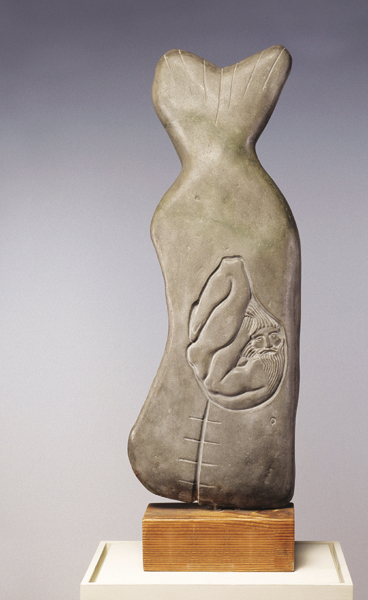
Jonah twists awkwardly as the whale plunges to the bottom of the sea. Jonah’s hair floats in all directions: a reminder of his aquatic grave. The up-ended whale could serve as a tomb-marker. The prophet’s plight seems hopeless, but, as is suggested by sculptor John Flannagan’s optimistic title Jonah and the Whale: Rebirth Motif, Jonah will be saved from the maws of both the whale and Hell.
Jonah himself requested to be tossed into the sea when he realized that his presence on a ship bound for Tarshish (and not Nineveh, where God had bid him go) had conjured up a fierce storm. When God provides the great fish to save him, Jonah swears to be faithful to God. “In my trouble I called to the Lord, and he answered me, From the belly of Sheol [the Underworld] I cried out, And you heard my voice…The bars of the earth closed upon me forever, yet you brought my life up from the pit…I, with loud thanksgiving, will sacrifice to you; what I have vowed I will perform,” Jonah calls out in a long prayer, delivered from the belly of the fish (Jonah 2).
Although North Dakota sculptor John Flannagan (1895–1942) typically worked with fieldstones, allowing the shape of the stone to dictate the subject, in Jonah and the Whale, he used cast stone, a concrete that imitates natural stones such as bluestone.
Already a library member? Log in here.
Institution user? Log in with your IP address.

